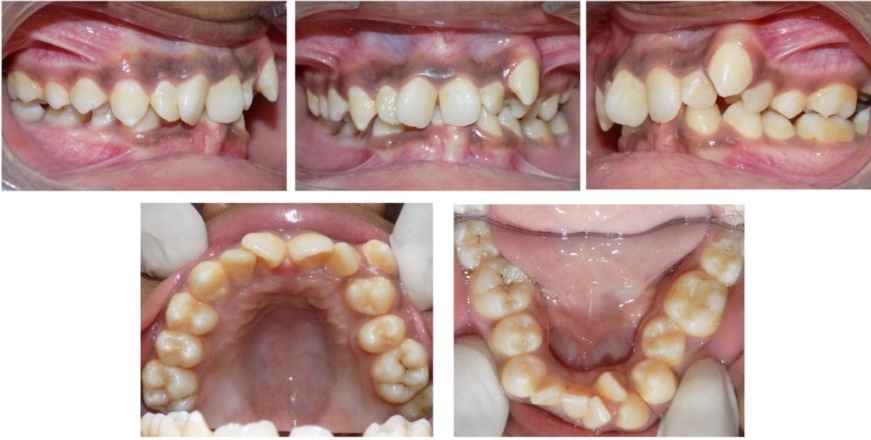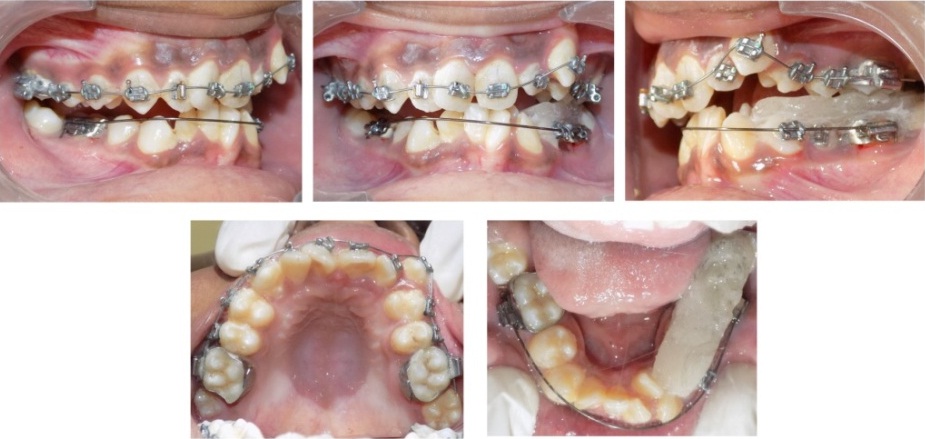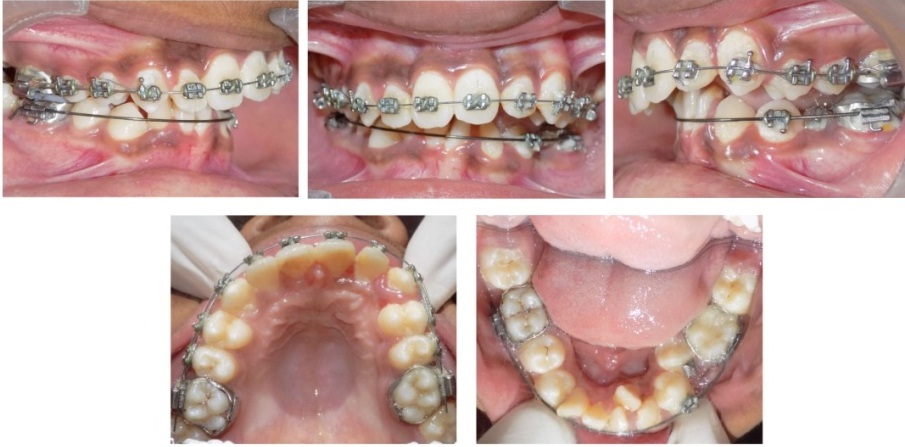Simple and Efficient Technique for Correction of Unilateral Scissor Bite Using Straight Wire
Siddhesh Gajanan Dolas1, Shrikant Shrinivas Chitko2, Veerendra Virupaxappa Kerudi3, Harshal Ashok Patil4, Prasad Vasudeo Bonde5
1 Post Graduate Student, Department of Orthodontics, ACPM Dental College, Dhule, Maharashtra, India.
2 Professor and HOD, Department of Orthodontics, ACPM Dental College, Dhule, Maharashtra, India.
3 Professor, Department of Orthodontics, ACPM Dental College, Dhule, Maharashtra, India.
4 Post Graduate Student, Department of Orthodontics, ACPM Dental College, Dhule, Maharashtra, India.
5 Post Graduate Student, Department of Orthodontics, ACPM Dental College, Dhule, Maharashtra, India.
NAME, ADDRESS, E-MAIL ID OF THE CORRESPONDING AUTHOR: Dr. Harshal Ashok Patil, Post Graduate Student, Department of Orthodontics, ACPM Dental College, Sakri Road, Dhule-424001, Maharashtra, India.
E-mail: drharshalortho@gmail.com
Unilateral scissor bite is a relatively rare malocclusion. However, its correction is often difficult and a challenge for the clinician. This article presents simple and efficient technique for the correction of severe unilateral scissor bite in a 14 year old boy, using 0.020 S.S. A. J. Wilcock wire (premium plus) out of the spool, with minimal adjustments and placed in mandibular arch. After about six weeks time, good amount of correction was seen in the lower arch and the lower molar had been relieved of scissor bite.
A. J. Wilcock wire, Extrusive forces, Intermaxillary cross-elastics
Diagnosis and Appliance Placement- A 14 year old boy reported with the chief complaint of irregularly placed upper and lower front teeth. The patient found it difficult to masticate on right side because of scissor bite malocclusion of molars and premolars. The patient had a straight profile with competent lips. On intra-oral examination the canine and molar relation was Class I on both sides and scissor bite of molars and premolars on right side [Table/Fig-1].
Pre-treatment intraoral photographs.

A 0.022″ × 0.028″ MBT slot prescription was used. Mandibular first molar was banded and mandibular left first and second premolar brackets were bonded [Table/Fig-2].
A 0.020 S.S. A. J. Wilcock wire (premium plus) out of the spool, made minimal adjustments and placed in mandibular arch [Table/Fig-2].
The wire without making arch form was placed such that its one side was engaged on left sided molar tube, and the other side was engaged on the molar tube on scissor bite side.
An acrylic bite block was placed on left side; the idea was to reinforce the anchorage from molars and premolars on one side to relieve the scissor bite on other side. It was based on the concept of using light continuous force [Table/Fig-2].
After about six weeks time good amount of correction was seen in lower arch and the lower molar had been relieved of scissor bite. About 5mm expansion was seen in lower arch [Table/Fig-3].
Straight archwire (A. J. Wilcock) insertion photographs.

Post scissor bite correction photographs.

Discussion
Scissor-bite most commonly occurs due to an arch-length discrepancy in posterior region and is characterized by labial eruption of the upper molar and/or lingual tipping of the lower molar. Growth and development of mandible is affected and so do the chewing and muscle function. Upper and lower second molars frequently present with scissor bite [1]. Scissor bite & cross bite lead to facial asymmetry, TMJ problems & disturbances in CR=CO, affect masticatory efficiency.
Numerous treatment modalities for scissor bite correction in the molars have been suggested: intermaxillary cross-elastics [2], multi-bracket appliance, Transpalatal Arch Appliance (TPA) with intra-maxillary elastics [3,4] and lingual arch appliance with intra-maxillary elastic [5]. It is seen that there is undesirable decrease in overbite, clockwise rotation of mandible and premature contact due to extrusive forces being generated on second molars in both jaws due to intra-maxillary elastics. Patient co-operation is required for achieving the desired treatment results. This article demonstrates correction of unilateral scissor bite using straight wire. The required unilateral correction of scissor bite was achieved in six weeks.
Advantages
Easy fabrication and placement thus eliminating the need of cumbersome wire bending.
Less chair side time was needed.
It is economical and cost effective.
Non invasive as compared to mini-implants.
[1]. Nagato T, Shingo K, Yasuyo S, Teruko TY, Takashi Y, Use of palatal miniscrew anchorage and lingual multi bracket appliances to enhance efficiency of molar scissor bite correctionAngle Orthodontist 2009 79:577-84. [Google Scholar]
[2]. Proffit WR, Fields JR, Contemporary Orthodontics 1999 3rd edSt Louis, MoMosby [Google Scholar]
[3]. Kucher G, Weiland FJ, Goal-oriented positioning of upper second molars using the palatal intrusion techniqueAm J Orthod Dentofacial Orthop 1996 110:466-68. [Google Scholar]
[4]. Nakamura S, Miyajima K, Nagahara K, Yokoi Y, Correction of single-tooth crossbiteJ Clin Orthod 1995 29:257-62. [Google Scholar]
[5]. Lim KF, Correction of posterior single-tooth crossbiteJ Clin Orthod 1996 30:276 [Google Scholar]